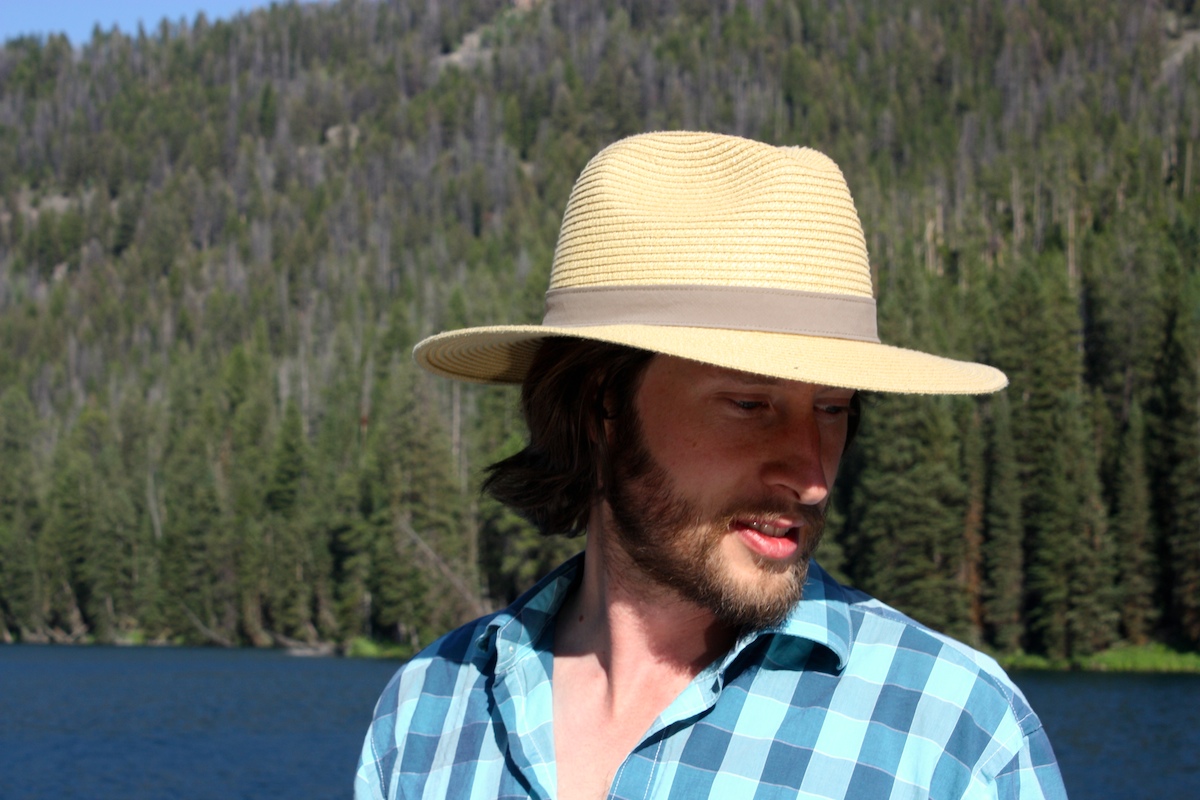Student’s Project Focuses on Ecological Design at Center
Good stewardship is central to the goals of the Taft-Nicholson Center. Beyond improving our own environmental performance, we work to provide students with meaningful opportunities to conduct research and coordinate projects focused on the environment and sustainability. Environmental Humanities graduate student Shaun Daniel is undertaking one such effort this year. His capstone master’s project is focused on solving a real-world issue at the Center concerning water use and habitat.
Investigating Permaculture Design for the Center

The streams of the Centennial Valley are vital habitat for the last endemic population of Arctic Grayling in the contiguous United States, as well as home to threatened native Westslope Cutthroat Trout. Daniel is seeking to answer a question with his project: What solutions are offered by a permaculture or ecological design approach for the Taft-Nicholson Center to leave more water in Shambow Creek for aquatic life, while still maintaining the Center’s water rights and the beneficial qualities of the landscaping?
Daniel, who received a Permaculture Design Certificate from Occidental Arts and Ecology Center in 2014, has long held an interest in permaculture and in ecological design more broadly. “I see these design processes as positive approaches to creating a just, sustainable, and regenerative world,” he says. “This project is a way to apply design principles at a small-scale to an important conservation issue.”
In their book Ecological Design, Sim Van der Ryn and Stuart Cowan write, “Design is a hinge that inevitably connects culture and nature through exchanges of materials, flows of energy, and choices of land use.” Bill Mollison, one of the founders of permaculture, describes this approach to design as “a system of assembling conceptual, material, and strategic components in a pattern which functions to benefit life in all its forms.”
Drawing on a permaculture principle that the solution is within the problem, Daniel is working with an advisory committee to consider options for reconfiguring the way the Center interacts with Shambow Creek, which flows down, around, and through our property. The Center’s water rights allow for diverting a portion of the creek for irrigation and flow of water to the Center’s waterfalls and pond. But this can put pressure on fish habitat, particularly in the driest part of the year. Daniel’s master’s project will propose solutions to expand the pond's functions and improve the way it relates with other elements on the property and with the Shambow Creek system itself.
In particular, Daniel is researching three components that could be implemented as part of an ecological design for the Center:
- Rainwater catchment and channeling of rainwater into the pond to offset at least a portion of the water currently diverted from Shambow Creek;
- Pump options for recycling water from the pond to the top of the waterfalls to maintain aesthetic function while improving aquatic habitat; and
- Possibilities for a conservation easement or similar agreement that would consider water left instream as a “beneficial use” under water rights law, thereby helping native fish while maintaining the Center's water rights.
Next Steps
As the project comes together, Daniel will be working with the advisory committee to explore how best to implement these design ideas. In turn, the project may also spur additional research opportunities for students interested in subjects like green building, riparian ecology, hydrology, and water rights law.
Daniel says, “The environmental humanities can be described as an exploration of human culture and experience in relation to the environment, especially environmental problems with human causes. A project like this is a chance to turn that idea around, to solve an environmental problem by adapting human culture and the way that we relate to the environment through ecological design. I am excited to engage in a project that has the potential to enhance the health and resiliency of the Shambow Creek system for the Center, its Lakeview neighbors, and all the creatures that call this place home.”
